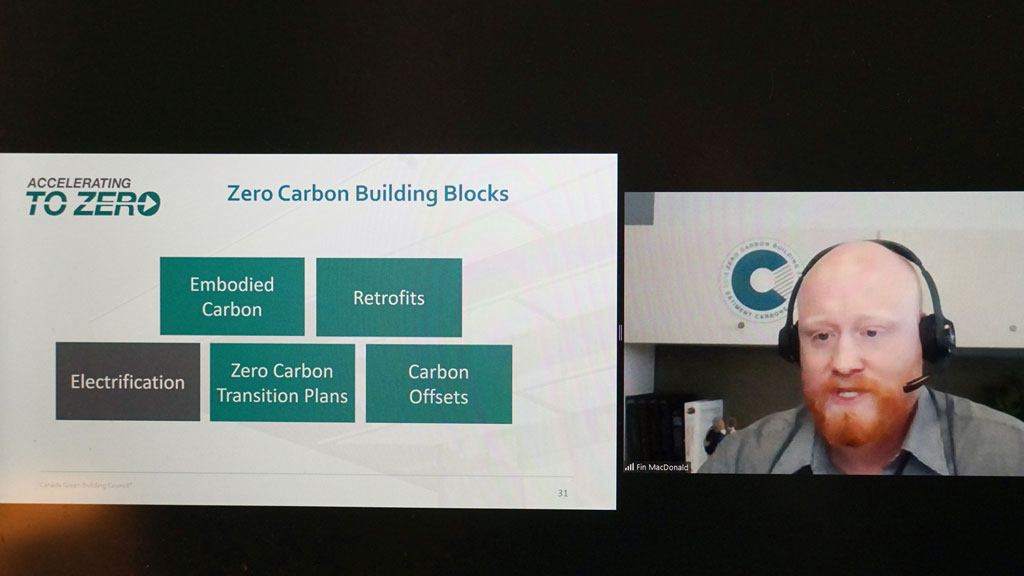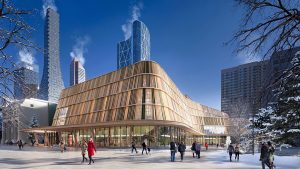The tools to assess and address embodied carbon have improved in the building world over the past few years but work still needs to be done in areas “hard to decarbonize” because of the limits of current technology and its high costs.
So said panellist Philippe St-Jean, sustainability construction manager with McGill University, during a webinar on the challenges of achieving net zero emissions, hosted by the Canada Green Building Council (CaGBC).
St-Jean said with the world building the equivalent of a Manhattan every month, the growth of greenhouse emissions is staggering.
“When you go beyond (building) the core and shell and you consider everything that goes into a building, it’s starting to approximate (and will outstrip) operational emissions on new builds, maybe 10 times out of 10,” he pointed out.
Over the past few years the building industry has struggled with changes to regulatory codes and faced other hurdles, labour shortages, for example, that have made the challenge of addressing embodied carbon on buildouts daunting at times, said panellist Christian Cianfrone, manager of mechanical design and energy optimization at EllisDon.
At the same time, zero carbon emissions are still new on the operational side, said Cianfrone, who built and launched ZEBx, Canada’s first zero emissions building prior to coming to EllisDon.
“Both problems are very big and we need to address them simultaneously.”
While there has been progress quantifying embodied carbon in the building industry, a remaining obstacle for contractors is that not all suppliers are on the same footing, he told the webinar audience.
“When the consultants and clients are asking for reductions…we want to know how to respond to that with our supply chain. There is still a lot of work to do.”
Until the manufacturing industry catches up to the consulting industry on meeting emission objectives, “we are not going to be able to deliver all the buildings we want to,” added moderator Fin MacDonald, with the CaGBC and manager of the Zero Carbon Building Program.
The issue has to be addressed on a multi-sector level.
“We ask a lot of building developers to understand and impact sectors well out of their control,” Jenny McMinn, managing director with Urban Equation, told the webinar audience.
Urban Equation provides real estate development and sustainability advice across North America.
St.-Jean pointed out one of the steps to achieving net zero is to rethink space usage.
The pandemic has provided opportunities to examine the efficacy of alternatives to traditional offices, such as home-based work spaces.
Emphasis on retrofitting, rather than replacing existing spaces, is paramount to meeting emission targets, he added.
Cianfrone said the shift to home offices has partly answered a “large challenge” of how to tackle energy retrofits with occupants in place.
While increasing the practice of adaptive reuse in North America can be a step in the right direction to meeting zero emissions, it can involve “overdesigning” for future usages that leads to a larger carbon footprint than needed in the immediate term, St-Jean said.
Envelope retrofits for thermal performance on buildings 50 years or older also has potential hurdles, the possible degradation of masonry assemblies and structural materials, he added.
“It (adaptive reuse) is important to do but it is important to look at holistically.”
McMinn, formerly of green building company Windmill Developments, said industry needs to make distinctions between labels, such as retrofits and deep energy building renewals.
She said critical building renewals can result in a developer and asset management team creating a business model “that actually speaks to a bigger carbon mitigation objective.”
MacDonald said the CaGBC will be presenting net zero events this year on embodied carbon, retrofits, zero carbon transition plans and carbon offsets.











Recent Comments
comments for this post are closed